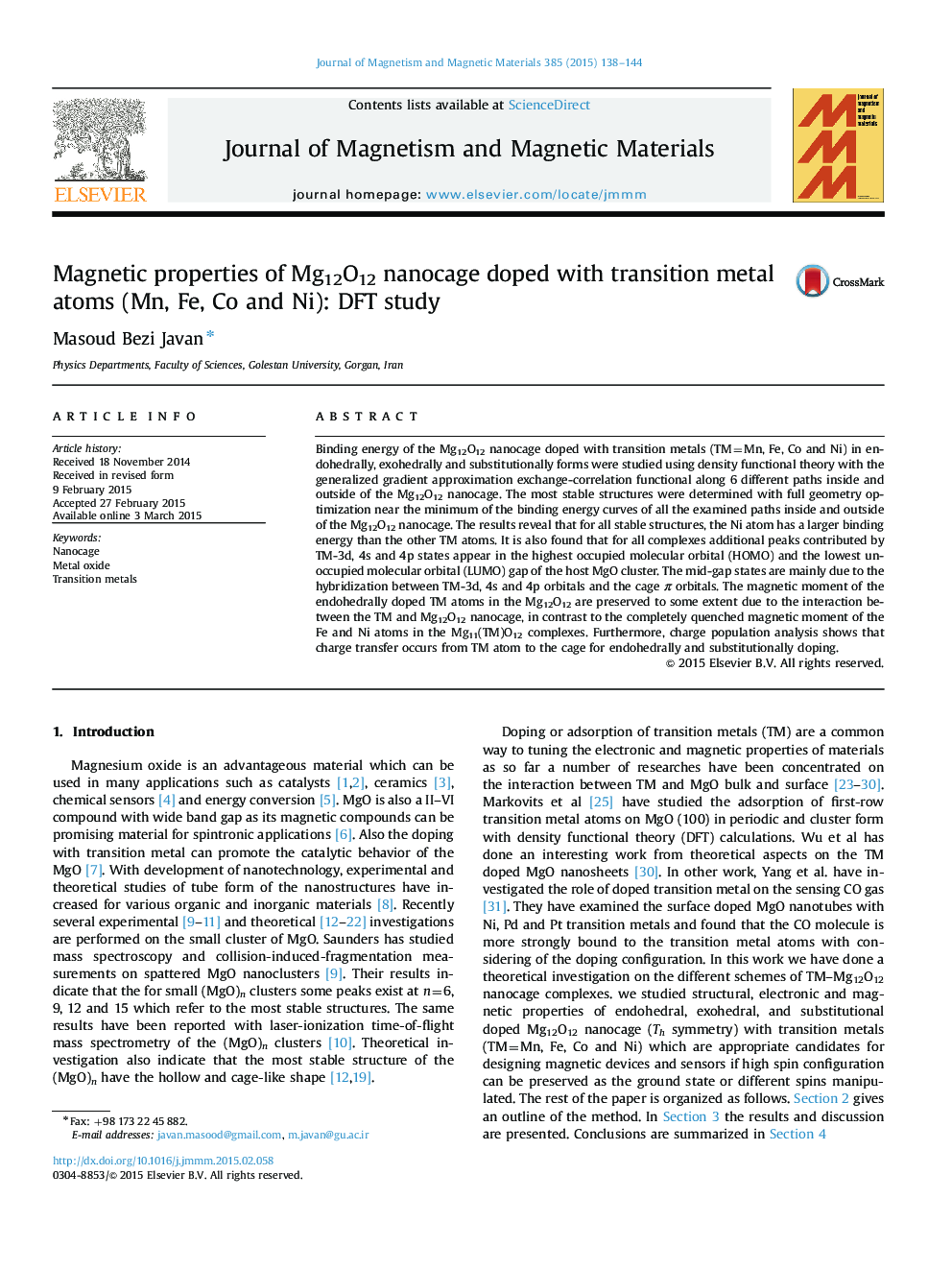| Article ID | Journal | Published Year | Pages | File Type |
|---|---|---|---|---|
| 1799132 | Journal of Magnetism and Magnetic Materials | 2015 | 7 Pages |
•Binding energy of the Mg12O12 nanocage doped with transition metals was studied.•The most stable structures were determined near the minimum of the binding energy.•The encapsulated Ni atom has a larger binding energy than the other TM atoms.•Magnetic moment of the endohedrally doped TM atoms in the Mg12O12 are preserved.
Binding energy of the Mg12O12 nanocage doped with transition metals (TM=Mn, Fe, Co and Ni) in endohedrally, exohedrally and substitutionally forms were studied using density functional theory with the generalized gradient approximation exchange-correlation functional along 6 different paths inside and outside of the Mg12O12 nanocage. The most stable structures were determined with full geometry optimization near the minimum of the binding energy curves of all the examined paths inside and outside of the Mg12O12 nanocage. The results reveal that for all stable structures, the Ni atom has a larger binding energy than the other TM atoms. It is also found that for all complexes additional peaks contributed by TM-3d, 4s and 4p states appear in the highest occupied molecular orbital (HOMO) and the lowest unoccupied molecular orbital (LUMO) gap of the host MgO cluster. The mid-gap states are mainly due to the hybridization between TM-3d, 4s and 4p orbitals and the cage π orbitals. The magnetic moment of the endohedrally doped TM atoms in the Mg12O12 are preserved to some extent due to the interaction between the TM and Mg12O12 nanocage, in contrast to the completely quenched magnetic moment of the Fe and Ni atoms in the Mg11(TM)O12 complexes. Furthermore, charge population analysis shows that charge transfer occurs from TM atom to the cage for endohedrally and substitutionally doping.
